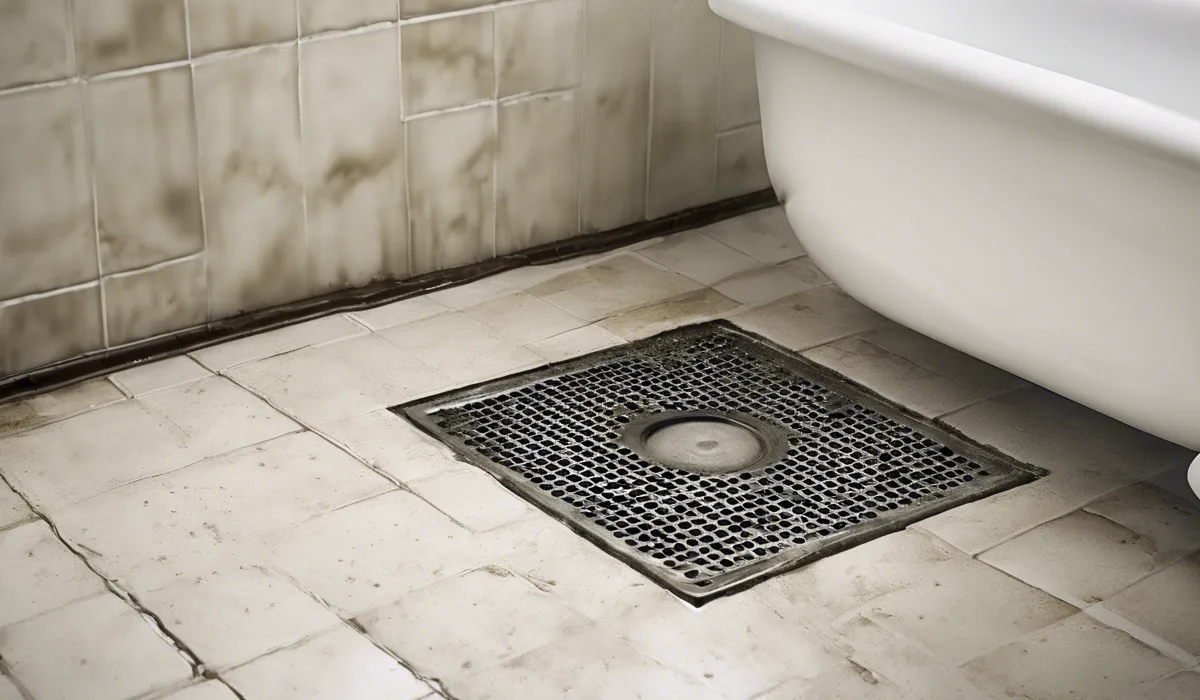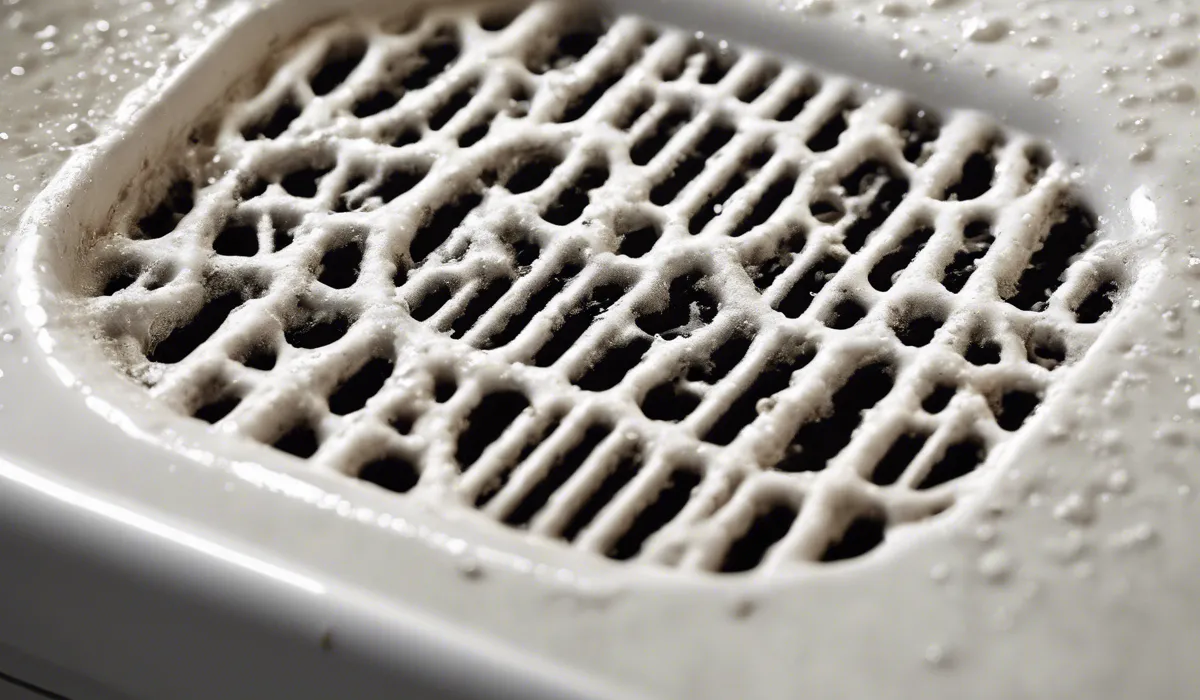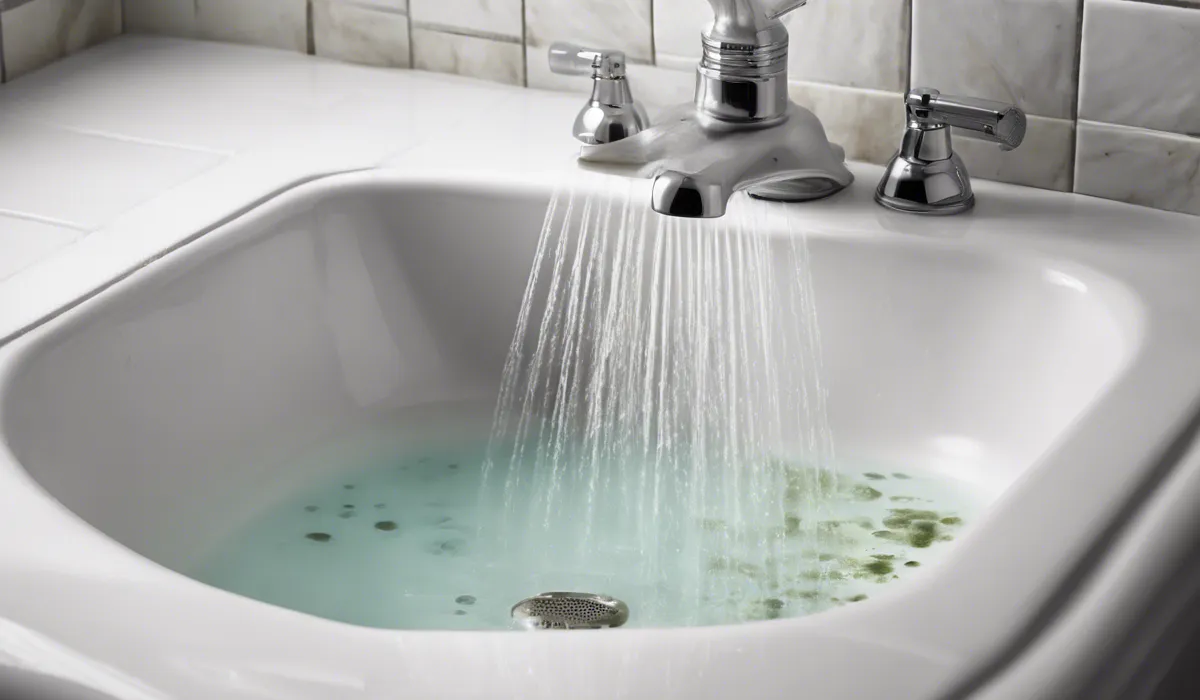To eliminate mold in a shower drain, first pour 1 cup of white vinegar down the drain. Wait for 30 minutes, then scrub with a brush. Flush with boiling water. For persistent mold, follow with a mix of 1/2 cup baking soda and 1 cup vinegar, wait 15 minutes, and rinse.
Identification of Mold in Shower Drain

Recognizing Visual Signs of Mold
Discovering mold in your shower drain starts with visual inspection. Look for unusual splotches or clusters that have a fuzzy or slimy texture. These can often appear as spots on the drain cover or within the crevices.
Pay attention to discoloration or any irregular patterns that seem out of place. Mold can spread quickly, so early identification is crucial to prevent it from affecting larger areas of your bathroom.
Differentiating Mold by Color and Texture
Mold can present itself in a variety of colors such as black, green, white, or even red. The most common type found in bathrooms is black mold, known for its potential to cause health issues.
Mold textures can range from velvety to cottony. Distinguishing these characteristics is important when deciding on a treatment method.
Musty Odors as an Indicator of Mold
A musty or earthy smell is a strong indicator that mold might be present even if it’s not immediately visible.
This odor is a result of the microbial volatile organic compounds (MVOCs) that mold releases as it grows. If you notice such a smell emanating from your shower drain, it’s time to investigate further.
Health Symptoms Related to Mold Exposure
Exposure to mold can lead to a variety of health symptoms including allergies, respiratory issues, or skin irritation.
If you or your family members are experiencing these symptoms without a clear cause, it could be due to mold growth in your home. It’s essential to address mold issues not just for the cleanliness of your home but also for the health and well-being of its occupants.
Natural and Chemical Methods to Remove Mold

Vinegar and Baking Soda Method
To eliminate mold naturally, begin by pouring 1 cup of white vinegar down the shower drain. Let it sit for 30 minutes to break down the mold’s structure. Afterwards, scrub the area with a stiff brush to remove the loosened mold.
Finally, flush the drain with boiling water to wash away any remaining mold spores. This method is safe, effective, and utilizes household items.
Using Bleach Solution for Stubborn Mold
For persistent mold, a stronger approach may be necessary. A solution of one part bleach to ten parts water can be used to kill mold on non-porous surfaces.
Apply the solution carefully to the affected area and let it sit for some time. Always wear protective gloves and ensure the room is well-ventilated when using bleach.
Hydrogen Peroxide as an Alternative to Bleach
If you’re looking for a less harsh chemical than bleach, hydrogen peroxide is a viable alternative.
It’s an effective antifungal and antibacterial agent that can help in removing mold. Apply a 3% hydrogen peroxide solution directly to the moldy area and let it sit for about 10 minutes before scrubbing and rinsing.
Applying Commercial Mold Removers
There are various commercial mold removers available specifically designed to tackle mold.
These products often come with instructions for safe and effective use. Be sure to follow the manufacturer’s guidelines and use protective gear as recommended.
Commercial mold removers can be particularly useful for severe mold infestations where natural methods might not be sufficient.
Preventive Measures to Keep Mold at Bay

Regular Cleaning and Maintenance
Consistent cleaning is the first line of defense against mold. Make a habit of inspecting and cleaning your shower drain regularly to prevent mold spores from taking hold.
Use cleaning solutions that are designed to kill mold spores, such as those with mold inhibitors, and ensure to physically remove any debris that can harbor moisture and mold.
Ensuring Proper Ventilation and Airflow
Proper ventilation is key in preventing mold growth. Use an exhaust fan during and after showers to reduce humidity.
If you don’t have a fan, keeping a window open can help. Additionally, consider using a dehumidifier in your bathroom to maintain lower humidity levels.
Using Mold Inhibitors in Cleaning Solutions
Mold inhibitors can be added to your regular cleaning solutions to prevent mold growth. These products work by creating an environment that’s inhospitable to mold, helping to keep your shower drain and bathroom mold-free. You can find these inhibitors at most home improvement stores or online.
Moisture Control Strategies
Keeping your bathroom dry is vital in the fight against mold. After showering, squeegee the walls and floor to remove excess water.
Fix any leaks promptly, and ensure your shower drain is not clogged, as standing water can promote mold growth. Additionally, consider using a shower curtain that’s resistant to mold and mildew.
Maintaining your bathroom and being proactive about moisture and mold can save you from the hassle and potential health risks associated with mold infestation.
By identifying mold early, using effective removal methods, and implementing preventative strategies, you can enjoy a clean and healthy bathroom environment.
FAQs About Getting Rid of Mold in Shower Drain
What is the first step to remove mold from a shower drain?
The first step is to pour 1 cup of white vinegar down the shower drain and wait for 30 minutes.
What should I do after pouring vinegar down the shower drain to remove mold?
After waiting for 30 minutes, scrub the drain with a brush and then flush it with boiling water.
How do I deal with persistent mold in my shower drain?
For persistent mold, follow up with a mixture of 1/2 cup baking soda and 1 cup vinegar, wait 15 minutes, and then rinse the drain.
Can I use baking soda along with vinegar immediately for mold removal?
Yes, for tough mold, you can use a mix of baking soda and vinegar immediately after the initial vinegar treatment.
What is the waiting period after applying the baking soda and vinegar mix to treat mold?
After applying the baking soda and vinegar mixture, wait for 15 minutes before rinsing the drain.
Final Thoughts
To remove mold in a shower drain, begin by pouring 1 cup of white vinegar down the drain and let it sit for 30 minutes.
Scrub with a brush and flush with boiling water. If mold persists, apply a mixture of 1/2 cup baking soda and 1 cup vinegar, wait 15 minutes, then rinse thoroughly.
